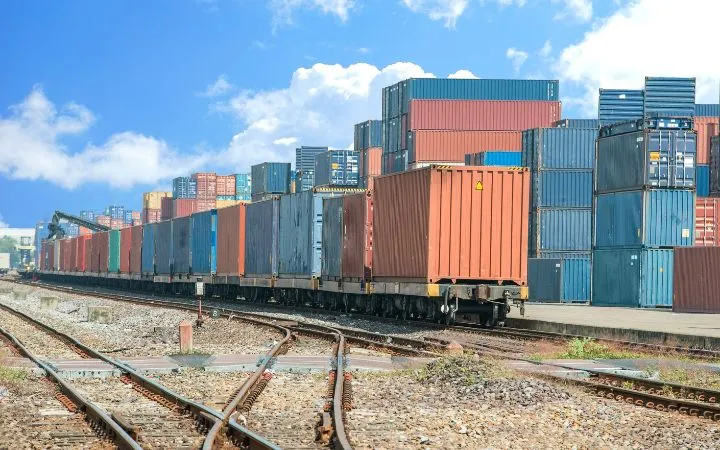
The German and European Paper Industry - Issues, Figures and Future
The German paper industry ranks first in Europe with an annual turnover of about 15 billion euros and a production of about 23 million tonnes. Worldwide, only China, the USA and Japan produce larger quantities of paper than Germany. In the face of climate change and related political and economic changes, the industry is currently facing many new challenges, but also opportunities.
.jpg)
Economic and political factors of the German and European paper industry
The German paper industry is globally oriented and exports a large part of its products to countries all over the world. In addition, it imports raw materials for the production of paper and board from various countries outside the EU. The industry is therefore influenced by both national and international policies. Due to its global reach, the paper industry advocates for a stable and liberal world trade system.
Facts worth knowing:
- The German paper industry produces over 23 million tonnes of paper, cardboard and paperboard annually.
- The industry has an annual turnover of about 15 billion euros.
- Currently, more than 40,000 people work in the paper industry.
- The German paper industry produces around 3,000 different types of paper.
- Paper machines are among the largest industrial plants, with a width of over 10 metres, a length of up to 200 metres and a height of 3 storeys.
- Paper, cardboard and paperboard are currently produced at over 150 locations in Germany.
- The German paper industry is the world champion in recycling paper products and attaches great importance to environmental protection.
The innovative product diversity of the paper industry
Not all paper is the same. The paper industry is a diverse and innovative sector that is constantly evolving. As the demands of end users are constantly growing, an advanced product policy is of great importance. Companies in the industry therefore invest in research and development in order to develop products for new applications. Thus, new types of paper, cardboard and paperboard are constantly being created that are suitable for numerous different areas of application. The production of printed packaging occupies a particularly important position. These are primarily needed to ensure a safe supply of food and other important goods. Packaging material is also used for the protection of valuable products and for export as primary packaging or secondary packaging. In addition, paper plays an important role in medicine and hygiene, in technical applications, as a printing substrate for books, media and labels.
The industry currently produces around 3,000 different types of paper, which can be divided into four categories:
- Packaging papers
- Sanitary papers
- Graphic papers
- Papers for technical and special applications

Impact of current political developments on the paper industry
The issue of climate change currently plays a central role in international politics. The paper industry is particularly affected by the demand to reduce greenhouse gases. Companies based in Germany have therefore greatly reduced their emissions in recent years. However, a further reduction, which is currently being demanded, would be linked to an increasing cost burden and further challenges for the industry. Frequent and sudden changes in legislation related to the energy turnaround led to greater planning uncertainty, especially in energy-intensive industries.
The paper industry is therefore calling for a coherent climate policy that also takes into account the needs of companies and does not jeopardise international competitiveness. In the context of the switch to renewable energies, producers are particularly dependent on a secure and affordable power supply without bottlenecks. As long as the energy supply with renewable energies cannot be guaranteed, the paper industry is therefore dependent on alternatives such as natural gas.
Logistics and transport of the paper industry's products
The German paper industry produces over 60 tonnes of paper every day. The products are not only transported within Germany, but to a large extent also exported to other countries within and outside Europe. To cope with this task, the industry depends on suitable means of transport with sufficient capacity. The paper industry is striving to shift transport from road to rail as far as possible. Since the conditions for an efficient use of rail freight are only given to a limited extent, the transport of paper has so far been carried out to a large extent by truck.
In addition, the industry obtains raw materials by sea and delivers products to customers overseas. It is therefore also dependent on functioning and affordable maritime transport. In recent years, the German paper industry unfortunately had to deal with problems in overseas transport, which have made both exports and imports more difficult.

These modes of transport form the supply chain of the paper industry:
- Road
- Rail
- Inland waterway
- Sea transport
Sustainability, climate protection and circular economy in the paper industry
The German and European paper industry is actively committed to a sustainable economy and makes an active contribution to the protection of the climate and forests. The industry strives for green paper production that nevertheless enables free competition.
Sustainable circular economy to protect European forests
The German paper industry attaches great importance to manufacturing in the most sustainable and environmentally friendly way possible. The paper mills located in Germany therefore produce in compliance with high environmental standards and attach importance to bioeconomy and circular economy. Recycling takes on a particularly high priority in paper production. In this country, about 70 per cent of paper is made from wastepaper. In addition, the industry relies on wood as a renewable raw material.
The wood used for paper production, in addition to pulp, comes mainly from sustainably managed forests in Germany and other nearby countries. In order to protect this natural raw material in the long term, the German paper industry is committed to protecting forests and environmentally friendly forestry. It actively supports the world's largest certification systems PEFC (Programme for the Endorsement of Forest Certification Schemes) and FSC (Forest Stewardship Council).
.jpg)
Climate protection for a greener world
Climate change is one of the greatest challenges of the modern world and also affects the German and European paper industry to a great extent. The industry is therefore committed to a climate policy aimed at CO2 neutrality and decarbonisation. Innovative technologies and digitalisation offer promising opportunities for the future of sustainable production.

The paper industry advocates technological competition to develop innovative forces. Modern technologies should lead to the development of increasingly environmentally friendly production techniques in the coming years. In this way, the paper industry can contribute its share to a greener world. In addition to the protection of forests, the protection of waters is also a high priority. The industry therefore attaches great importance to its water consumption and adheres to high water protection standards. Within the last 50 years, the specific water consumption for the production of one kilogramme of paper has been reduced from almost 50 litres to less than 9 litres.
Energy-efficient production
The German paper industry makes an active contribution to the energy transition by continuously optimising its energy consumption. By using modern technologies such as renewable energies, geothermal energy, hydrogen and combined heat and power, the industry invests in manufacturing processes that enable the most efficient use of raw materials.
The statistics clearly prove that new methods of resource use contribute to significantly lower emissions. From 1955 to 2020, the specific energy input for the production of one tonne of paper was reduced by as much as 66.5 per cent. In addition, the industry is committed to reducing emissions in logistics. For this reason, it is calling for the authorisation of the use of long trucks and an increase in the permissible total weight of trucks. In this way, considerable amounts of fuel could be saved in the near future.





